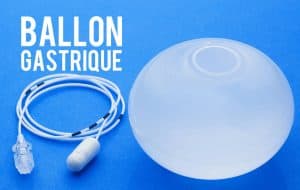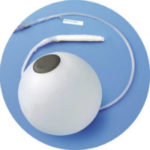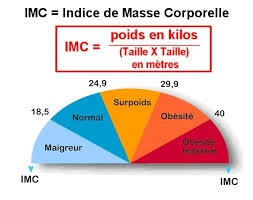A reliable source on many subjects.

A reliable source on many subjects.

![]()
 The gastric balloon is a non-surgical method of facilitating weight loss.
The gastric balloon is a non-surgical method of facilitating weight loss.
It consists of inserting a balloon into the stomach, to induce satiety and enable people who find it difficult to lose weight to receive support in their slimming process.
It is said that the gastric balloon can help you lose the same weight in 6 months as after 2 years of effort…
So we’re curious to discover the advantages and disadvantages of this slimming aid.
 The gastric balloon is a small balloon made of a soft, malleable silicone elastomer material. Once in the stomach, it is filled with saline or air, and floats freely. By occupying a certain volume in the space where food is ingested, the gastric balloon slows down digestion, providing a sensation of gastric fullness and satiety.
The gastric balloon is a small balloon made of a soft, malleable silicone elastomer material. Once in the stomach, it is filled with saline or air, and floats freely. By occupying a certain volume in the space where food is ingested, the gastric balloon slows down digestion, providing a sensation of gastric fullness and satiety.
There are different types of gastric balloon. Some are ingestible, while others are connected to a tube which, with the aid of a fibroscope, enables them to be inserted empty into the stomach and then inflated. A gastric balloon can be fitted for between 3 months and 1 year, depending on the patient’s needs and the weight to be lost.
Here’s an overview of the different types of gastric balloon.
This gastric balloon is ingested under X-ray control, without anesthesia or fibroscopy. If the sensation of satiety proves insufficient, a second balloon can be inserted after 1 month, or even a third balloon if necessary. Removal is by fibroscopy after 3 months.
This type of balloon comes in different models. Some have a silicone envelope filled with sterile saline solution; others have a polymer pouch inflated with air; finally, some gastric balloons have a polyurethane envelope, also filled with saline solution.
This type of balloon is adjustable by means of tubing. In this way, the balloon volume can be reduced at the outset, particularly in cases of poor tolerance, or increased after 6 months if weight loss stagnates. It is either filled with sterile saline or air.
 The gastric balloon is considered by professionals to be an effective aid when it is impossible to follow a diet for more than 2 months, or when the weight lost is regained as soon as the diet is stopped. Thanks to the feeling of satiety it provides, it helps to get rid of the yo-yo effect and facilitates regular follow-up of an overall slimming program. It’s important to stress that the gastric balloon is not a miracle solution for shedding unwanted pounds, but an accompanying tool that must be combined with a balanced diet and regular physical activity if it is to bear fruit. What’s more, every gastric balloon insertion is accompanied by an assessment and follow-up by a multidisciplinary team to ensure that the patient is motivated, able to follow a balanced diet and modify his or her lifestyle.
The gastric balloon is considered by professionals to be an effective aid when it is impossible to follow a diet for more than 2 months, or when the weight lost is regained as soon as the diet is stopped. Thanks to the feeling of satiety it provides, it helps to get rid of the yo-yo effect and facilitates regular follow-up of an overall slimming program. It’s important to stress that the gastric balloon is not a miracle solution for shedding unwanted pounds, but an accompanying tool that must be combined with a balanced diet and regular physical activity if it is to bear fruit. What’s more, every gastric balloon insertion is accompanied by an assessment and follow-up by a multidisciplinary team to ensure that the patient is motivated, able to follow a balanced diet and modify his or her lifestyle.
The gastric balloon is considered a good indication for people who have between 10 and 25 kg to lose.
However, there are a number of contraindications:
Although gastric ballooning does not require surgery, it is not a trivial procedure. For the gastric balloon to be an effective tool in the success of an overall weight loss program, a multidisciplinary approach is required.
The gastroenterologist is the specialist who will fit the balloon. It is also with him or her that the possibility of fitting a gastric balloon, its indications and contraindications, is discussed beforehand. The gastroenterologist can also confirm whether, from a physiological point of view, you can benefit from a gastric balloon. Your gastroenterologist will monitor you closely in the days following balloon insertion, and every 2 months for as long as the balloon remains in your stomach. This follow-up is designed to ensure that the balloon is working properly, that there are no undesirable side effects, and to make any necessary size adjustments to maintain the feeling of satiety and the chances of success of the program. The nutritionist will also remove the balloon at the end of the program.
A professional in the field of nutrition and weight loss, the nutritionist will help you understand the basics of a balanced diet, and apply them to your daily life. He or she will help you make the right food choices, while preserving the pleasure of eating. After gastric balloon insertion, follow-up with a nutritionist takes place at the rate of 1 appointment per month, more if necessary. Cooking classes can be offered to help you prepare healthy meals and manage your diet in your daily life. Follow-up continues for 1 year after balloon removal.
This is a professional who deals with the psychological and behavioral aspects of the slimming process. He or she is there to listen and work on the underlying causes of excess weight. He or she can also help to modify eating disorders, and offer discussion groups to boost your chances of long-term success.
Before the gastric balloon is inserted, the patient is cared for by a multidisciplinary team (discussed in our previous paragraph).
During – Gastric balloon insertion – approximate duration: 20 minutes
After
The following video clearly explains the gastric balloon insertion technique:
At the end of the allotted time, the balloon is removed because the stomach has adapted, rendering it ineffective. Performed under general anaesthetic, the removal of the balloon is done under intubation and endoscopic control, and lasts around 15 minutes. No surgical intervention is required.
The gastric balloon is usually very well tolerated. In fact, the stomach adapts to its presence in just a few days. This leads to an increase in acid secretion, as well as contractions of the stomach against the balloon, which is perfectly normal.
However, in the 3 days following the procedure, the following side effects are common:
Medication is usually prescribed to alleviate the discomfort, which is only temporary.
Figures show that only 1-3% of people suffer from intolerance to the balloon, which is then removed. Other complications, though rare, are possible. These include esophagitis, gastritis, ulcer, pancreatitis or perforation (the latter 2 are extremely rare).
Finally, in some patients, the feeling of satiety disappears after just a few weeks, necessitating adjustments to the balloon.

In combination with a balanced diet, regular physical activity and a profound change in lifestyle, the gastric balloon enables weight loss to be achieved in the vast majority of cases.
However, weight loss depends on a number of factors, including program follow-up and motivation. Whether you lose weight and keep it off depends on how you adopt the changes over the long term.
With a gastric balloon in the stomach for 6 months, weight loss can range from 10 to 25kg. This will depend on the number of kilos you need to lose, your metabolism, and how hard you work!